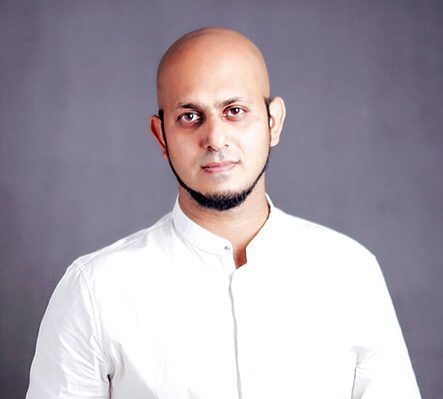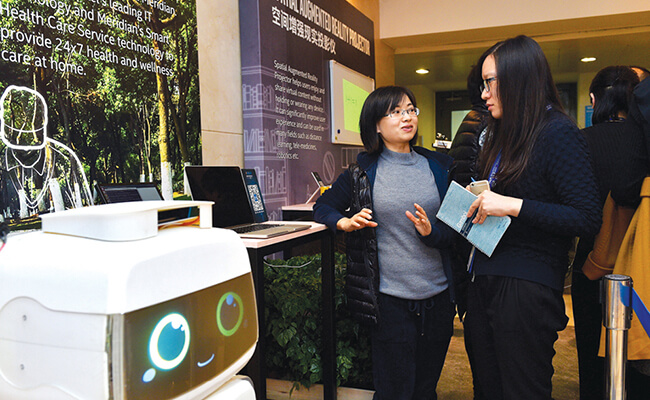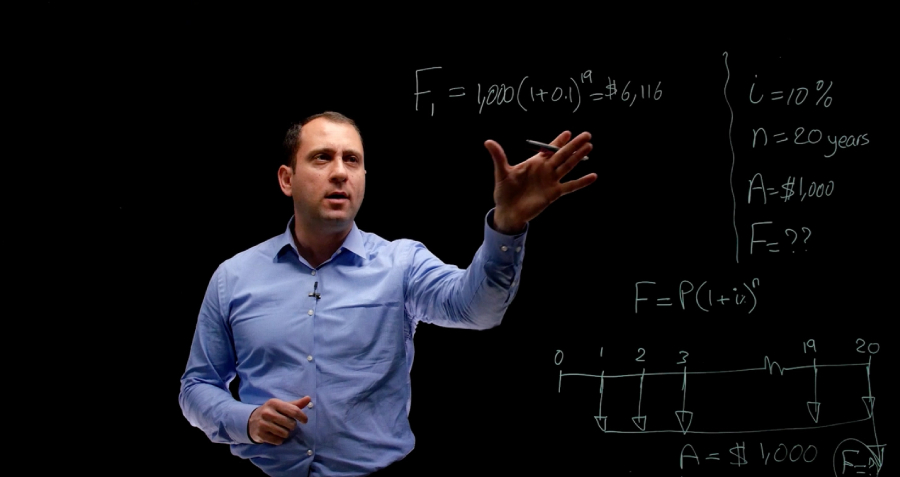 Kapil Kane, Director of Innovation at Intel China, describes how his Ideas2Reality program uses human resources already at hand to search for the ‘Next Big Thing’
Kapil Kane, Director of Innovation at Intel China, describes how his Ideas2Reality program uses human resources already at hand to search for the ‘Next Big Thing’
How do big multinational companies innovate? According to Kapil Kane, Director of Innovation at Intel China, there are three ways: partnership, acquisition and in-house development. The problem with the last of these is that in-house R&D laboratories may be good at invention but not at innovation—that is, finding new uses for, or making improvements to, existing products and processes. Kane aims to fix this with his Ideas2Reality (I2R) program at Intel China.
I2R is a startup program nested inside Intel’s China operation. It encourages employees to submit ideas, which are vetted, incubated and accelerated using the same principles used by leading Silicon Valley accelerators, such as Y Combinator, with the aim of producing viable business applications. By looking inside the company, Intel is leveraging the talent and knowledge of its engineering staff by training them to think like entrepreneurs—and by this standard, it is as much focused on people as it is on technology.
Kane holds a master’s degree in Mechanical Engineering from Stanford University. Early in his career, he played an important role in developing Apple’s first touch-screen products, and later moved to China to oversee aspects of the manufacturing of MacBook computers. He has been living and working in China for 10 years, mostly in Shanghai.
Before heading the innovation program at Intel China, you were at Apple. What did you work on there?
After working at my first job out of college, designing cars at Johnson Controls, I enrolled in a Ph.D. program at Stanford, studying product design and engineering. While there, I interned at Apple one summer. Although I was not fully aware of it at the time, because of the extreme secrecy, I, along with couple other engineers, ended up creating the first-ever multi-touch screen that went on to find its way into the very first iPhone that Apple released.
Amazing! What was your role?
We were just kids! Our mentor was the real brain behind the project, I was the mechanical guy and the third guy was in reliability, so his job was to try to break everything that I designed. As I said, we had no clue about the iPhone, but we were toying with this idea of having a big screen that you could interact with by touching with all 10 fingers—our first version actually resembled something more like the iPad. And the killer app was the map: you could zoom, you could rotate and twist using your fingers.
The whole thing was so much more exciting than what I was doing in graduate school. I really pleaded with my professor and said, “Please let me go.” Luckily, I had enough credits to get a master’s degree, so I was able to graduate. However, I would say my real education happened at work. “Design thinking,” “being human-centered,” all these hot terms that you read about now, I learned all that on the job and from really amazing people.
What brought you to China?
It was the first MacBook Air, which was, at that time, the thinnest computer ever created. In fact, it was so thin that the only way to make it was to carve the body out of a solid block of aluminum—what this meant was that we had to design the process to design the product. To accomplish that, we decided to move a few people from Cupertino to China, and I signed up for the challenge.
The main reason for this was that when we designed components and sent the specifications to the Chinese manufacturers, they would come back and give 10 reasons why they can’t do it. Then we’d have to change the design and this wasted a lot of time. But if we were here, right on the factory floor, seeing how it’s made, we could quickly tweak the design or challenge them about the manufacturing process. That’s why I came to China about 10 years ago.
And then you moved to Intel?
I moved to Intel about five years ago, at first to create a tablet computer for underprivileged children—it was an evolution of the “One Laptop per Child Program” started by MIT’s Nicolas Negroponte. Our challenge was to create a tablet that would be cheap enough and rugged enough to become the next version of this classic program.
Eventually I ended up working on a holistic solution for education in places with low internet infrastructure called Education Content Access Point. It’s like a Wi-Fi access point, but you can carry it with you. Teachers in remote areas can simply put it in their bags and take it to the class. They have everything they need without having to be connected to the internet.
And how did the innovation program within Intel get started?
Intel operates out of more than 10 sites in China. Some of these sites had a policy similar to Google—employees were given time to pursue their own creative projects. We had some small successes, but the president of Intel China thought we might do better by uniting these efforts. The thinking was that if we could do this innovation in a more systematic way, we could actually make an impact. My position was created about two and a half years ago.
The program is called Ideas2Reality, or I2R, and there are two phases: incubation and acceleration. The incubation phase happens year-round. Anyone at Intel can submit an idea to our online platform. Along with the idea there are a few simple questions to answer: what resources are needed to bring that idea forward, and what will be delivered at the end of the day if those resources are granted. Then every month a committee of experts in various fields gets together, goes through the ideas, and determines which ones are worthy of seed investment, almost like an angel investor. From there, we provide some resources, access to mentors, interns and a bit of money to develop the idea.
This keeps the workforce engaged on things that matter to them. It keeps them motivated and happy. In return, we get a huge bag of cool new technologies.
Then comes the second part: acceleration. Now that we have all these technologies, we try to turn them into viable businesses. Innovation is about creating value, not about creating demos—you have to build something that customers are willing to pay for. Twice a year, we select a batch of five to seven projects for the acceleration program that lasts six months.
The inspiration came from the famed Silicon Valley accelerator Y Combinator and SOSV’s (Sean O’Sullivan Ventures) China Accelerator right here in Shanghai. We start with a business model canvas: their key assumptions, their partners, revenue stream and so on. The thing is, 99% of people in this program are engineers—they have no idea about business concepts, and that’s where we have to start. We introduce them to the concept of minimum-viable product (MVP). Their goal is to deliver an MVP and a validated business case in six months. These we bring back to Intel management.

So you are teaching them to be business people and marketers, in addition to engineers.
Right, we are engaging the mindset of our innovators so that they can actually talk about the ideas in a way that makes sense to business leaders. Usually if you ask engineers to explain their ideas, they start getting into technical details. We don’t want to hear any of that. Tell us why the idea matters. What is the problem you are trying to solve? How big is that problem and why do you believe you are the right person to solve the problem?
They also need to be taught how to deliver a good pitch in five minutes. Many engineers are uncomfortable talking to anyone outside of their group, so we challenge them to get out of Intel and talk to people. We actually require them to spend one day per week in a startup accelerator. We recently launched a program called I2R StartupX in partnership with XNode, a co-working space and a startup accelerator in Shanghai just to do that. They talk to other startups there, they talk to would-be customers and potential partners, right there in that setting and not in the comfort of their offices. At the end of this acceleration, we have solid business logic to bring back to the business units.
What is the scale of the program in terms of people involved and resources devoted?
Intel China has about 7,000 employees and this program is for them. Since the program began, we have had 350 ideas come in—one every couple of days. Out of these 350, we have incubated about 70. When it comes to acceleration, in our first three completed batches, we have accelerated about 20 projects. Right now, we are working on the fourth batch, which has seven projects.
As for administration, we have just two full-time headcounts dedicated to this program—it’s me and another employee. But we also get help from a bunch of part-time volunteers from various business functions like finance, HR, employee communications, legal and venture capital. Super lean—that’s how we have managed to survive various downturns in the recent past.
Can you give an example of a successful project?
We had a really interesting project that came from Li Weigang, a guy in the Network Processing Group. He had created a software program to make data encryption and decryption run faster on Intel hardware. What he noticed was that, with a few tweaks, he could re-purpose the same code to compress large amounts of data in very little time—specifically, the kind of data created during human gene sequencing. The only problem was that it was not his group’s responsibility.
He came to us and we not only helped him develop the technology, but also connected him with some of the world’s largest genome sequencing companies, BGI and Novogene (see article on page 54). They simply loved what he had created. It solved a major pain point for them. With the customer already loving it, we were able to convince the right business group to make it a part of their next release. In June this year, it became an official Intel product.
Only someone deep in the weeds could spot a need like that?
Exactly, such ideas are born out of real people doing real things in their day-to-day jobs where they connect the dots. Decision makers in the business units sitting in the US wouldn’t necessarily know of customer pain points in China, or how large that opportunity might be.
This is exactly why our program exists. Engineers that see these problems don’t have the communication channels to reach the decision makers. Then, more importantly, they don’t have a customer, but the reason they don’t have a customer is because they don’t have the resources to develop a solution. In other words, it can be a very chicken-and-egg problem. Our Ideas2Reality program solves that problem.
In the more traditional startup model, the founders would get a stake in the company. How are your employees rewarded?
Ideally, founders should get a stake in the business that he or she has created, but we are still in the early days and we have not yet had a blockbuster success. Without a big bang success story, it is hard for me to go to my higher-ups at Intel and say, “Hey, you need to change the compensation model.” However, at this point our employees are super happy to be recognized. We have this Wall of Fame at all sites featuring our innovators. We also feature them in posts on our official WeChat account. Another great motivator is that they get to go and network with the top leaders of our company not only in China, but also worldwide.
We also tried twice to encourage our employees to leave Intel and start their own companies, but both times we did not succeed. In the first instance, the guy got cold feet, which goes to show that taking risks is not for everybody. Some people are happy with a corporate job, but one that still allows them to do cool things.
Compensation is something I think about a lot. Eventually someone will ask to become the GM (general manager) of a group that they helped create, and that would be a great problem to have!
What are your other internal goals with this project?
There is no other program like this at Intel. Although there is a group at Intel in India called Ideas2Reality, they are far from a program like ours. They start with ideas that originate from brainstorming in small groups and have the team and resources within the group to develop them further. What I want to do is bring our bottom-up approach to innovation to other corporate locations and eventually to our headquarters.
I believe what we have found here is a good model that is similar to what startups are doing right now. If you look at the startup ecosystem, there are incubators, there are accelerators and there is seed funding. We are mirroring all that, but within the company.
The other focus for us is people. Yes, we are creating projects and new businesses. But, more importantly, we are changing the mindset of our workforce. We are turning our innovators into “intrapreneurs,” that is entrepreneurs inside of a large organization. That’s what I say is the true value of our program. These “intrapreneurs” we create are the ones who are going to give us the next big thing.
In other words, you are trying to change the corporate mindset?
Before we get into that, I’d like to clarify one thing. People often confuse innovation with invention. Invention is creating something new that did not exist before while innovation is finding new ways of using existing things to create value for the customers and bring in revenue for the company. Touch screens, cellular communication and internet browsing are great examples of inventions that existed before the iPhone came along. Apple merely packaged them together and that won the hearts and minds of consumers around the world. That’s innovation!
Now there are essentially three ways to innovate as a big company. You can partner with an outside company, you can do an acquisition outright or you can create innovations on your own. Traditionally creation has been the job of the lab, the R&D center, but R&D centers do not necessarily innovate, they invent things.
The question I see then is, if you can partner with outside companies, why are you not willing to partner with your own employees? Look inside and see what you have! There is one remark that our Intel China president made that I quite like: there is a willingness to back a couple of guys dropping out of school and creating a startup, and that is great. But what about guys coming from a Fortune 500 company, or a Fortune 50 company, who have been in the business of technology for 10 years? When they come up with an idea, what is stopping you from backing them?
Yes, what is stopping a company from backing them?
I think it’s just human nature. We tend to listen to people far from us, the so-called “experts,” rather than those who are close to us, our own employees. But, at Ideas2Reality we are striving hard to change that.



















